The #DailySpace brings you the universe at 10am PST / 1pm EST / 5pm GMT on twitch.tv/CosmoQuestX. Today’s #spacenews includes many stories:
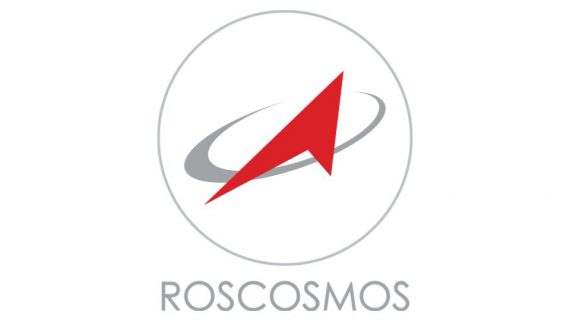 The launch & docking coincided to the day w/the 50th anniversary Neil Armstrong’s first steps on the Moon.
The launch & docking coincided to the day w/the 50th anniversary Neil Armstrong’s first steps on the Moon.
“I can’t think of a better way to commemorate the 50th anniversary of the Apollo moon landing than launching on the anniversary with an international crew, especially in light of NASA’s reaffirmation that we intend to land a crew on the surface of the moon in 2024,” Andrew Morgan said before the launch.
Also, MORE HUMANS (and a toilet!) HAVE GONE TO SPACE!!!

A literal metric ton of photos from the Soyuz ISS mission: https://spaceflightnow.com/2019/07/22/photos-soyuz-crew-blasts-off-from-baikonur-cosmodrome/
IT LAUNCHED! Chandrayaan 2 will arrive at the moon in September. Until then, it’s doing a series of maneuvers like Beresheet did to raise its orbit away from the Earth and closer to the moon
Indian at heart, Indian in spirit!
What would make every Indian overjoyed is the fact that #Chandrayaan2 is a fully indigenous mission.
It will have an Orbiter for remote sensing the Moon and also a Lander-Rover module for analysis of lunar surface.
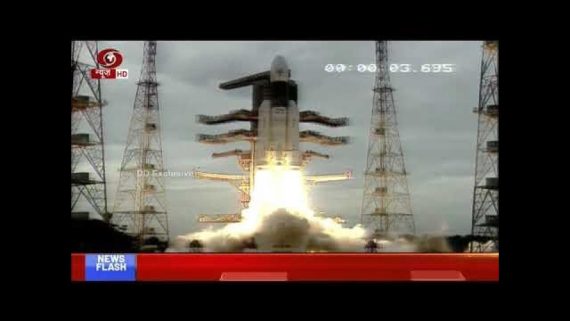
https://spaceflightnow.com/2019/07/22/gslv-mk3-chandrayaan-2-mission-status-center-2/
LOTS of technical data regarding the Chandrayaan 2 orbiter, the Vikram Lander & the Pragyam Rover toward the bottom (beginning) of the stream
 From the stream: T-minus 60 minutes. Here are some statistics on today’s mission:
From the stream: T-minus 60 minutes. Here are some statistics on today’s mission:
- 4th GSLV Mk.3 launch
- 4th Indian launch of 2019
- 1st GSLV Mk.3 launch of 2019
- 27th mission from Sriharikota’s Second Launch Pad
- 2nd Indian lunar mission
- The Chandrayaan 2 spacecraft’s three components each carry a suite of scientific instruments
Chandrayaan 2 Orbiter
- Mass: 5,244 pounds (2,379 kilograms)
- Dimensions: 3.2 x 5.8 x 2.1 meters (10.5 x 19.0 x 6.9 feet)
- Power: 1,000 watts
The Chandrayaan 2 orbiter — designed for a one-year mission — carries eight scientific instruments, including a high-resolution stereo imaging camera, a dual-frequency synthetic aperture radar look for evidence of water ice at the lunar poles, an imaging infrared spectrometer to aid in the search for water, and sensors to study the moon’s tenuous atmosphere. The orbiter will also provide data relay services for the Vikram lander.
Vikram Lander:
- Mass: 3,243 pounds (1,471 kilograms)
- Dimensions: 2.54 x 2.0 x 1.2 meters (8.33 x 6.6 x 3.9 feet)
- Power: 650 watts
The Vikram lander’s targeted touchdown zone is located in a highland region on the the near side of the moon at approximately 70.9 degrees south latitude, closer to the moon’s south pole than any previous lunar landing mission. Vikram will use five throttleable liquid-fueled engines to slow down for landing. The stationary landing craft carries a suite of multiple cameras and three science instruments, including a seismometer to listen for moonquakes, a thermal probe to reach a depth of up to 33 feet (10 meters) to measure the vertical temperature gradient in the lunar crust, sensors to investigate plasma near the moon’s surface, and a NASA-provided laser retroreflector array to help scientists locate the lander’s exact position on the moon. The Vikram lander is designed to last 14 days on the moon, equivalent to one lunar day.
Pragyan Rover
- Mass: 59 pounds (27 kilograms)
- Dimensions: 0.9 x 0.75 x 0.85 meters (3.0 x 2.46 x 2.79 feet)
- Power: 50 watts
The solar-powered Pragyan rover has a range of up to 500 meters, or 1,640 feet, during its 14-day mission on the moon. The AI-enabled rover has six wheels and will relay science data and images through a radio link with the Vikram lander. Indian scientists installed an alpha particle X-ray spectrometer to measure the elemental composition of the rocks at the Chandrayaan 2 landing site, along with a laser-induced breakdown spectroscope. The Pragyan rover is named for the Sanskrit word for “wisdom.”

TONIGHT! Wednesday July 24 @ 22:24 UTC // 18:24 Eastern // 15:24 West Coast
ORIGINAL DTG: July 21 @ 23:35 UTC // 7:35PM Eastern // 4:35PM West Coast
Wait, why was this pushed back? The static fire test was successfully completed on its 1st try, but the date of that test was pushed back repeatedly to Friday evening (20JUL, less than 12 hrs prior to launch) for unannounced reasons
https://spaceflightnow.com/2019/07/19/falcon-9-rocket-test-fired-ahead-of-station-cargo-launch/
NASA has a vested interest in this particular booster, it would seem:
“Quite frankly, [NASA] had a vested interest in this particular booster. We were gonna require it – the intent is to [reuse B1056 on SpaceX’s upcoming CRS-18 launch] and – potentially – CRS-19.”
Kenny Todd, ISS Operations and Integration Manager, NASA Johnson
“Not only will NASA fly Cargo Dragon’s CRS-18 mission on B1056, but the agency is already actively considering reusing the same Falcon 9 booster – assuming a successful launch and landing next week – on CRS-19, SpaceX’s second-to-last Dragon 1 (i.e. Cargo Dragon) launch. If all goes well with CRS-18, CRS-19 could come as early as December 2019, while CRS-20 – likely Dragon 1’s last launch ever – is scheduled no earlier than March 2020 and could certainly make use of B1056.3 if NASA is interested.”
The above is from https://www.teslarati.com/spacex-falcon-9-flight-proven-nasa-launch-static-fire/
EXPERIMENT INFO BELOW:
From the SpaceFlightNow article: A habitat carrying 40 female mice will also launch inside SpaceX’s Dragon spacecraft. The capsule will return to Earth with 30 of the mice to Earth after approximately a month in orbit, and specimens from the mice will distributed to medical and biological researchers to investigate how spaceflight affected the animals.
The other 10 mice will remain on the station to undergo longer exposure to microgravity. This is in addition to the new docking ring & a bunch of other experiments that, as always, are too numerous for our streams to mention.
https://www.issnationallab.org/press-releases/rodent-research-mission-on-iss-national-lab-enables-investigators-to-leverage-space-flown-specimens/ This one says 20 will fly back & 20 will stay longer, which is different from the other article, but I trust this one more re:science experiment details.
I just watched a video that had that as one of the 3 experiments they talked about. The other two were the silica crystal experiments by Goodyear and something about an automated bio-printer (made by Techshot) that will be making “cardiac-like tissue” which, when strong enough, will come back to Earth for testing.
“More payloads than we’ve ever sent on a single mission.” – ISS Nat’l. Labs
It’s a lot. Waaaay too much to mention. I’ll probably share the link in chat for those that want to read more about it.
https://www.issnationallab.org/press-releases/spacex-crs-18-mission-overview/
NICKELODEON IS SENDING UP AN EXPERIMENT. ON SLIME. I’m not joking.
ADIDAS IS SENDING UP SOCCER BALLS
CRS SpX-18
Launching Wednesday 24JUL19 2224 GMT (6:24 p.m. EDT) from SLC-40 at Cape Canaveral AFS, it will be SpaceX’s 20th launch of the Dragon space capsule, 18th under the Commercial Resupply Services contract w/NASA. (They flew two “test” missions prior to CRS 1.) This booster (B1056) is the same that launched the previous CRS-17 mission to the ISS during its maiden flight, landing out in the Atlantic on the “Of Course I Still Love You” (OCISLY) barge. For this mission it is slated to land at LZ-1 back at the Cape.
https://www.nasaspaceflight.com/2019/07/falcon-9-static-fire-test-crs-18/
Among other supplies, experiments & hardware being delivered is a third docking adapter ring to be mounted on the ISS to accommodate future US Commercial Crew vehicles.
“As its numerical designation suggests, IDA-3 is the third of the International Docking Adapters. The IDA’s are built in order to convert the older shuttle era Androgynous Peripheral Attach System-95 (APAS-95) style docking systems on the ISS’s Pressurized Mating Adapter-2 and 3 (PMA-2 and PMA-3) docking ports, into the newer International Docking System Standard (IDSS) style.”
The adapter will be installed via the Canadarm.
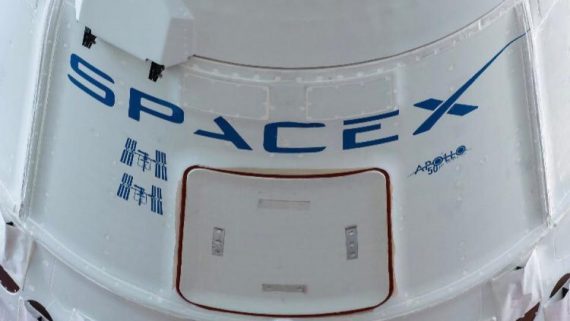
Here’s a picture of the Dragon cargo capsule. If you look closely, you can see the “Moon to Mars” Apollo 50th logo. Given the timing (and the fact that the original launch was scheduled for the 21st), it is appropriate.
Some facts about this launch!
- This particular Dragon spacecraft has previously visited the ISS twice — April 2015 and December 2017.
- The booster has also been launched before — 4 May 2019 for the last ISS resupply mission by SpaceX — CRS-17 (it landed on OCISLY)
- This is the first time that a first gen Dragon has been used THREE TIMES. That also means that this is the last mission for this particular Dragon. (Thanks to Stephen Clark of SpaceFlightNow.com for that info!)
What’s going up: A LOT OF STUFF, here’s a quick run-down:
- Food
- Supplies
- “Computer Resources” 16.8kg –> a few laptops??
- Mice!
- IDA-3 –> new international docking adaptor
- a few CubeSats
- Soccer balls by Adidas –> behavior of free-flying soccer balls in microgravity, literally studying spherical aerodynamics
- Nickelodeon Slime –> for educational videos about non-Newtonian fluids in microgravity. THE ASTRONAUTS GET TO PLAY WITH SLIME. FOR SCIENCE.

StarCraft Glory Space Technology
Launches Hyperbola-1 in theory, tomorrow at 0500 UTC. NO LIVE VIDEO. It’s China, there’s never live video.
星际荣耀空间科技
It’s an early stage venture that raised all of it’s own money independently — not from a parent govt company/entity
- https://www.crunchbase.com/organization/ispace-752d
- https://www.weibo.com/3279752321/HEYmD7gb6?from=page_1005053279752321_profile&wvr=6&mod=weibotime&type=comment#_rnd1563978626483
And yes, that is a picture of two SUVs ON THE ROCKET.
This is why: Changan Automobile is the name sponsor of this first flight. I’m not joking.
WEY, the SUV maker that was the name sponsor of maiden Long March 11H joining in on the countdown to launch for maiden Hyperbola-1 whose name sponsor is another car maker Changan Automobile.
The asteroids are a bit of an odd choice…
ℹ:https://t.co/AUhRYjNy1c pic.twitter.com/w4kelJ9so9
— LaunchStuff (@LaunchStuff) July 23, 2019
Join us tomorrow for more Daily Space news – and keep mapping Bennu!


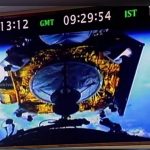
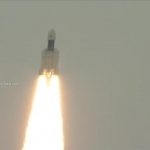


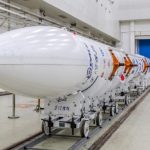



 Join the Crew!
Join the Crew!
 Escape Velocity Space News
Escape Velocity Space News
0 Comments